This article was adapted from Jony’s talk at the Product Marketing Summit in Toronto. Catch up on this talk, and others, using our exclusive OnDemand service.
Hi, my name is Jony Tabuteau, and I'm the Senior Product Marketing Manager for Xero. I have the privilege of leading a team of product marketing managers across the US and Canada.
My team is essentially responsible for helping to accelerate Xero’s growth in North America, and that's what I'm excited to talk to you about today: the role that product marketing plays in growth.
I'll be focusing on a variety of topics, including:
- The complexities of growth
- Regional product marketing: How product marketers can lean in
- Three ways product marketing shapes new markets
- How a customer-first approach will enable you to succeed
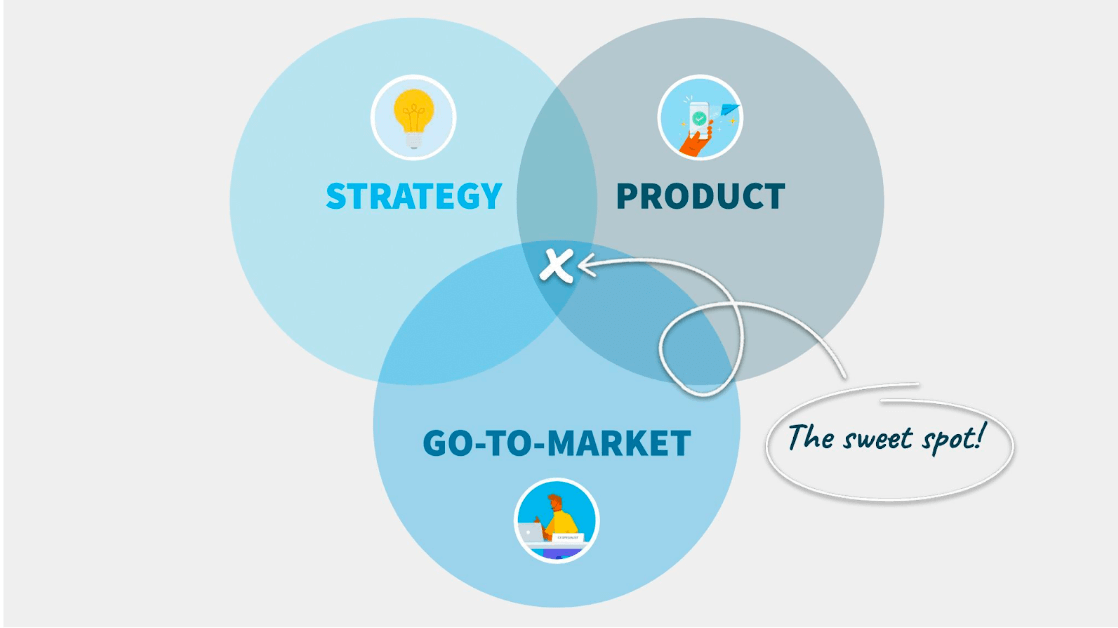
Now, product marketing varies a lot depending on the company you work for and the stage of growth you're in.
I believe that it can add the most value when it sits at the intersection of three worlds: strategy, product, and go-to-market. What I love about product marketing is it allows you to use all the skill sets from those three areas.
Product marketers do a lot of different things, from product launches to positioning to adoption, but one area I think we can play an even more important role is expanding into new markets. That’s because sitting at the intersection of a lot of key teams gives us a unique perspective.
I hope that as your business grows and looks to expand into new regions, you can, as a product marketer, lean in and say, “We not only deserve a seat at the table; we should be the ones leading these initiatives.”
What is Xero?
Before we get into it, I want to set the stage and tell you about Xero. The first thing you need to know is we are not Xerox – I’ve got nothing against them, they make a fantastic product, but that’s a different company.
We all have different targets for success. Some people want to hit a certain revenue goal; some people want to achieve a certain run rate; I would just love to tell people where I work and not have them start complaining about their printers jamming all the time.
(I’m kind of joking, but it happens more than you would think.)
With that out of the way, Xero is a SaaS platform that provides accounting solutions to small businesses, accountants, and bookkeepers. While we started off as a core accounting solution, we've evolved over time and layered in additional products like payroll and tax solutions.
We've also grown regionally. We were founded in New Zealand, we then grew into Australia, Singapore, Europe, the US, and Canada. Today, I’m going to share my learnings from that experience of expanding into new markets.
The complexities of growth
Although growth stories are exciting, it's not always sunshine and rainbows. It can be significantly harder for some tech companies to grow into new markets, depending on the product they have and the space they’re in.
Let's unpack that a bit.
New markets introduce a ton of new variables. That can either present a huge opportunity for you to benefit from, or it can hinder your growth. The variables show up in each of the three areas I talked about earlier: strategy, product, and go-to-market.
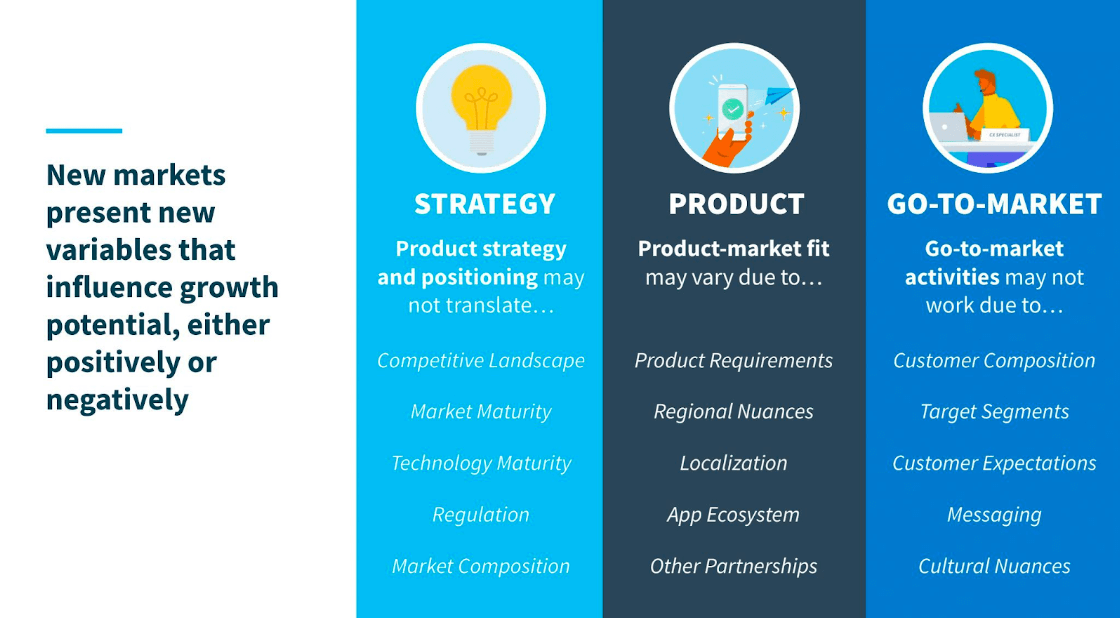
Let’s start with strategy. Because of things like the competitive landscape, market maturity, and the regulations that you have to comply with, your positioning may need to change completely when you expand into a new market.
From a regulation standpoint, what your product can do may also be limited by the regulations in a different province or country. That means if you work in health tech, fintech, proptech, or any other highly regulated industry, your product will vary quite a bit when you go from your home market into another one.
Your product’s capabilities may also be limited by what that market is ready for. I'll give you an example from Xero. Open banking in Canada is significantly behind the rest of the world, as is cloud adoption by SMBs.
The market’s just not there yet. We’re a cloud-based platform whose bread and butter is connecting data from financial institutions so that made things pretty tricky for us as we began to size up the Canadian market.
Localization needs to be considered as well. For instance, if you're launching in Canada and you don't have a French-language product, your total addressable market shrinks dramatically. You also have to think about how your app ecosystem and your partnerships are going to work in new regions.
Product requirements can be a minefield too. I'll give you another example. We built a tax product for the UK – one tax product to cover the whole country. For Canada, we've got 13 because of all the different provinces and territories. Meanwhile, the US has 14,000 different tax rates that we had to try and combine. I don't know what they're doing down there!
All these factors and more can impact your products, which means that when you grow, your product-market fit can be severely impacted.
Finally, there’s the go-to-market side. This one might be the most straightforward one to tackle, but your approach is still going to be quite different. The customer makeup in your new market may not be the same.
Perhaps there’s a strong enterprise presence or more of a mid-market presence. The unmet needs of customers can vary quite a bit too from market to market.
All that is to say that your product-market fit, and therefore how you position and go to market can vary massively from region to region. You can't just take what you've done in one place and copy-paste it elsewhere.
All these variables in your strategy, your product, and your go-to-market motions come together. That means if you try to replicate your approach from one market to another, you can find yourself facing any number of the following problems:
- Uncompetitive product-market fit
- Ineffective product positioning
- Lack of clarity around the target customer
- Messaging that doesn't resonate
- Sales team is not set up for success
- Misaligned product priorities
This leads to costly and inefficient growth. You’ll find yourself doing a lot and not getting much back in return.
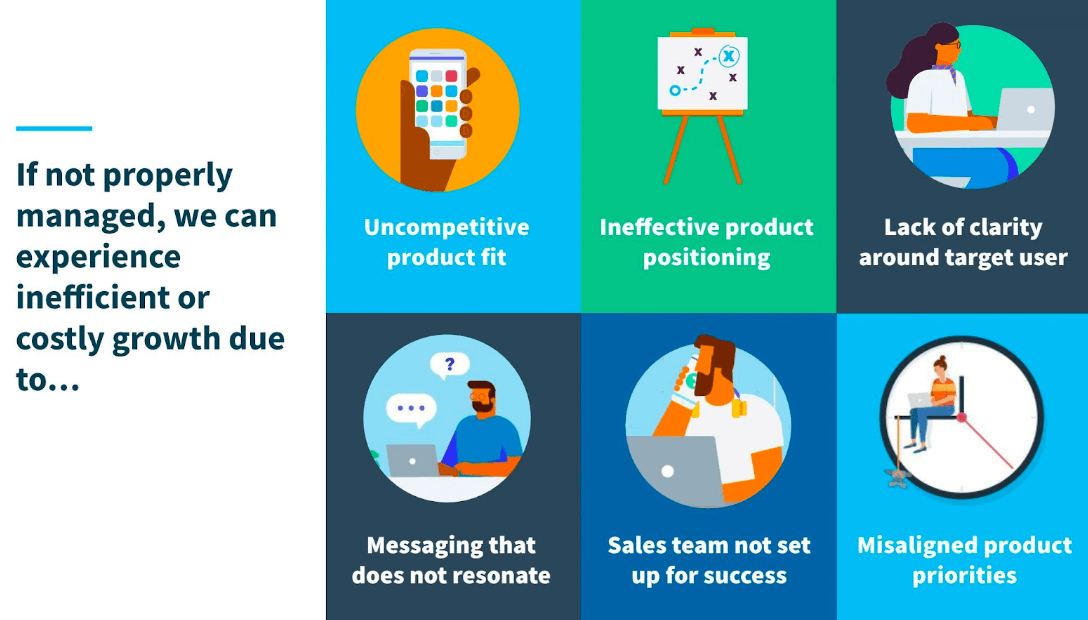
Regional product marketing: How product marketers can lean in
These challenges are hard to overcome, but as product marketers, we can try to mitigate them. But first, we have to shift our mindset from “What can't we do?” to “What can we do?”
I'm not saying that product marketing alone is the silver bullet. These challenges need to be tackled at an organizational level as well. However, product marketers can lean in and drive value by leading initiatives to mitigate these pain points.
I'm going to share how we’ve overcome these obstacles at Xero to drive growth as we expand into new markets. I’ll also share some things that you can do as a product marketer when you're looking to expand, whether that’s into a new market, a new vertical, or a new segment. We’ll explore how you can make the best of what you have.
First, let me explain how we’ve structured the product marketing organization. As well as the regional product marketing roles I’m about to describe to you, we have traditional product-led product marketing roles.
These are part of global product groups where the product marketer is embedded with a product group that's responsible for everything from discovery to launches to adoptions.
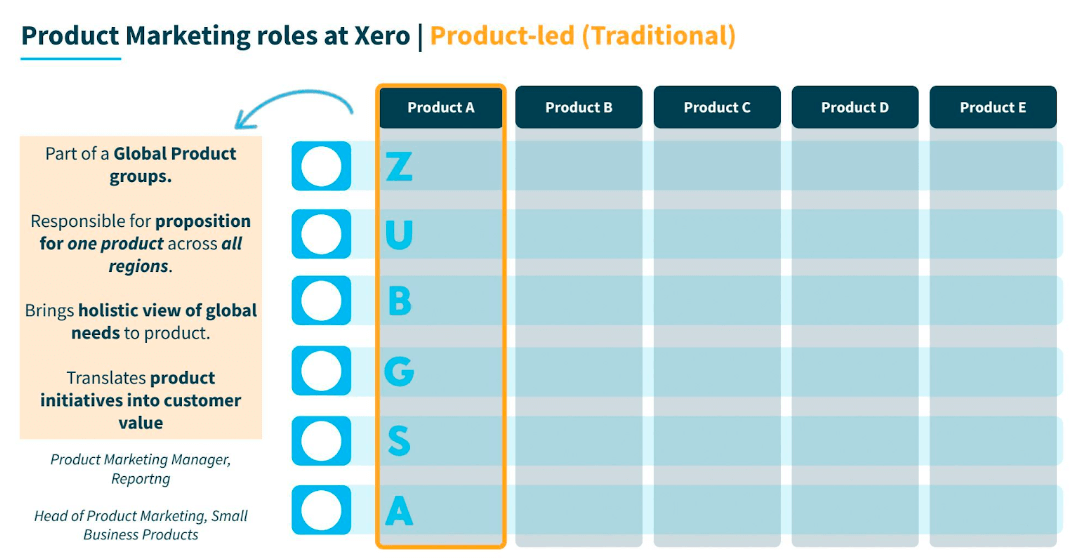
The product marketers in those roles are brilliant, but as we grew into markets that were further away from home and knew less about them, we found that those roles didn't always capture the nuances of product-market fit or customer contexts. We had strong positioning on our offerings, but the dots didn't always connect with the customer’s perspective.
From an organizational standpoint, one way we mitigated this issue was through the launch of regional product marketing roles.
What these roles involve can be neatly summed up with a term that I kind of hate myself for using: glocalization. It’s about being as local and regional as possible in everything you do, so you have a clear understanding of who you're trying to sell to.
These roles sit in regional go-to-market teams as well as product teams and are essentially responsible for how we show up within a region.
Instead of one product across every market, we look specifically at one market while at the same time looking across all the products we have. That allows us to connect the dots and frame our offering in a way that's going to drive the most value for the target customer.
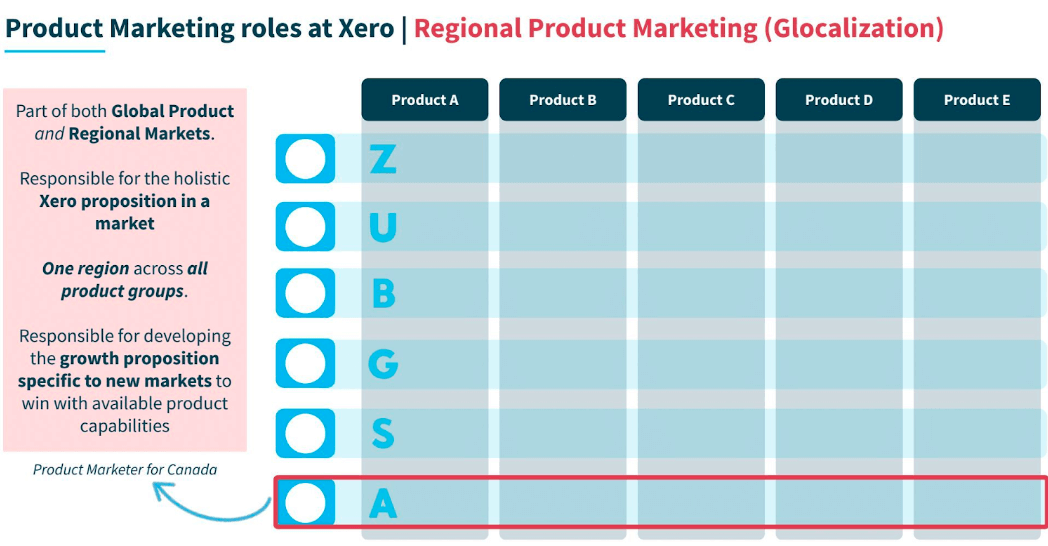
As with many growing companies, we have a range of product portfolios. While a traditional PMM role may drive strong positioning for just one product category, the regional role looks across all our different portfolios, combines them, and uses that as a way to grow.
The point is that as you grow, you may not have the same product-market fit. But that doesn't mean you can't do something about it.
It's about taking all the product capabilities you have and positioning them as effectively as possible to the needs of the market you’re targeting. That way, your messaging is going to better resonate with the customer you're talking to and you’ll be able to carve out a foothold in a new market, and then add product-marking fit as you go.
As I said, this involves a mindset shift. We don't need to be everything to everyone. We may have everything figured out in one market, but we need to be a bit more resourceful as we grow into another one.
This means focusing more on where we can deliver the best experience and plugging any gaps. That’s going to allow us to secure tangible wins so we can grow with a customer and use that relationship as the foundation for growth in the market.
Think of it like this: when you’re entering a new market, you want to get a seat at that crowded table by weaselling your way in and making some elbow room once you're there. That’s a lot easier than pulling up to the table with your chair and expecting everyone to make room for you.
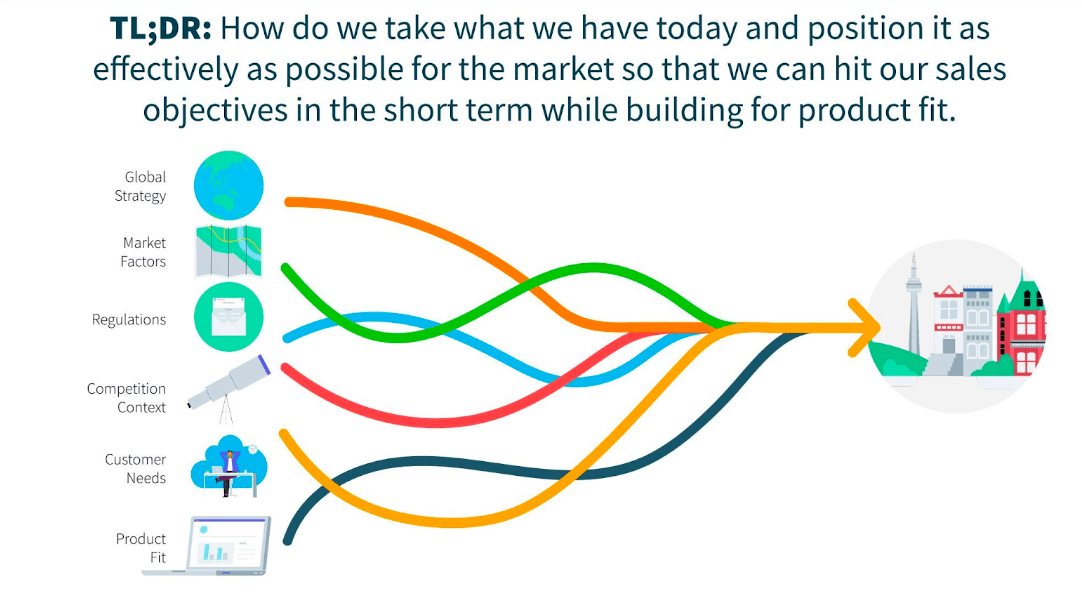
Putting theory into practice
What I’ve covered so far might seem a little abstract, so let’s go through some of the ways that you as a product marketer can put this theory into practice as you enter a new market.
As we know, product marketing plays an important role in shaping the growth of your product positioning in new markets. There are three main steps to make this happen, each falling into one of the buckets we talked about earlier: strategy, product, and growth.
It all starts with developing a positioning strategy to secure a foundation for growth. Then, once you have clear positioning that’s going to help you win, you’ll want to work with your product counterparts to influence the roadmap for product-market fit.
Finally, you’ll take that positioning strategy and reinforce it across your go-to-market teams to set them up for success.
Let’s dive a little deeper into each of those steps.
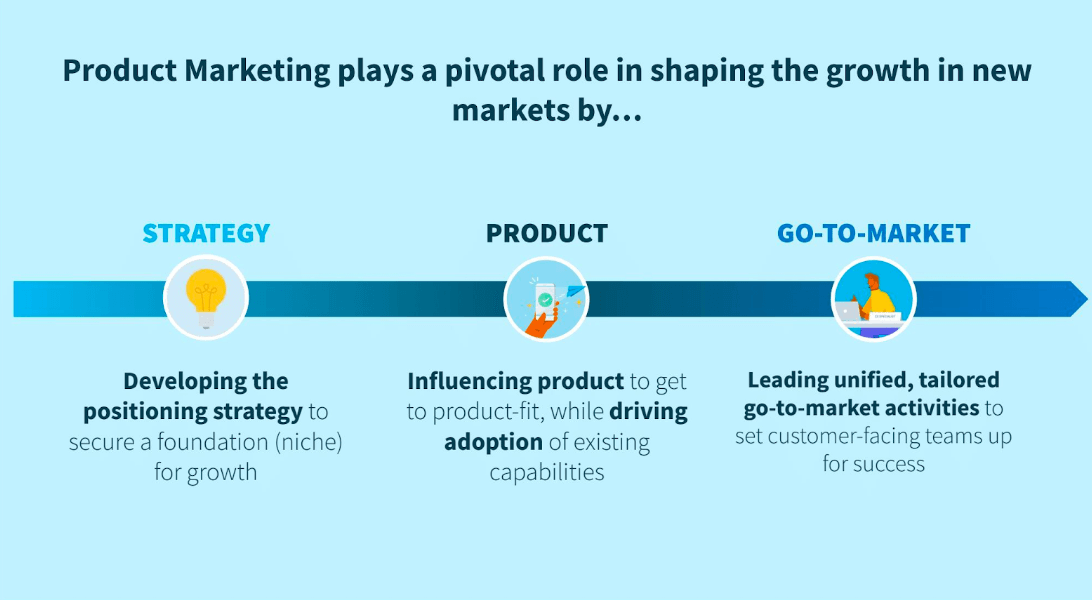
Step one: Develop your positioning strategy
To develop a positioning strategy that’s going to allow you to compete in your new market and secure a foundation for growth, you need to start by synthesizing some key pieces of information:
Market context
- What’s the current state of the market you’re going into?
- What trends are you seeing?
Product
- Can you honestly say that you have product-market fit in your new market?
- What are your strengths and weaknesses?
- What are your differentiators?
- Are you missing out on any key partnerships in this new market?
Competition
- What are their strengths?
- Do they have any weaknesses that you can capitalize on?
Customer
- How will you segment your new customer base?
- What are their unmet needs and pain points?
Your global playbook
- What are your best practices?
- What needs to be adapted to this new market?
You can take all this information and use it to develop concise positioning that will help you achieve growth in your new market – even if you don’t yet have all the tools that will set you up for success there.
You can build this positioning by answering a few key questions:
- What can you compete with? In other words, what can you do well in the new market, and what can’t you do?
- Who can you win with? Based on your product’s capabilities and your product-market fit, who should your target segments be? You want to make sure you orient around those individuals, rather than trying to be everything for everyone.
- Where are there opportunities in this new market?
- How will you package all of this up into consistent product positioning?
- Where to next? What’s your growth plan?
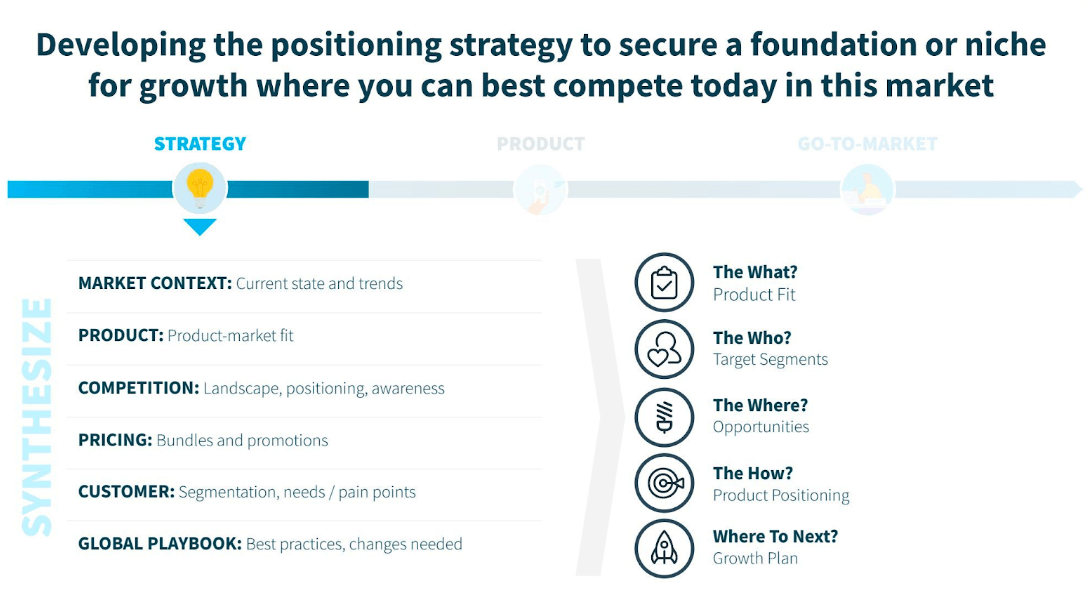
This is not just theory. This is what we did in Canada. We had numerous headwinds, not least when it came to finding product-market fit.
Doing the very exercise I’ve just described helped us understand the market needs and where we could fit in, then position ourselves strategically to align with that market – a much more successful approach than just copy-pasting what we’d done in New Zealand.
Xero’s positioning for Canada is significantly more targeted and focused because of the constraints that we faced. Rather than leaning away from our product-market fit challenges, we leaned into them, and that's creating momentum for us in this new market.
This process and the positioning that came from it are informing our annual planning, our sales planning, and our product roadmap for the next few years. As a product marketer, it's been amazing to be at the start of the value chain.
Step two: Influence your product teams
Now that we have positioned to enter the market, it’s time to move down the value chain. We’re going to work with product to influence them in a way that complements everything we’ve just uncovered and created.
Now, I don't want to speak poorly about product teams – they are our friends after all – but I will say they could use all the help they can get. We should be the ones leaning in to provide that help.
So how does product marketing lean in? By understanding the product’s positioning and working with the product team to accelerate it down the most strategic path to product-market fit. If we're going after a niche in a specific market, let's focus on filling gaps in that market as opposed to trying to make little improvements everywhere.
From a product marketing standpoint, it's about surfacing the voice of the customer in your region so that product teams can enhance existing products for this market. This can even help them create net-new products that don't exist elsewhere but are needed within your regions.
Surfacing the voice of the customer is also going to help your product teams to prioritize what’s important so they can make the most of the resources available to them.
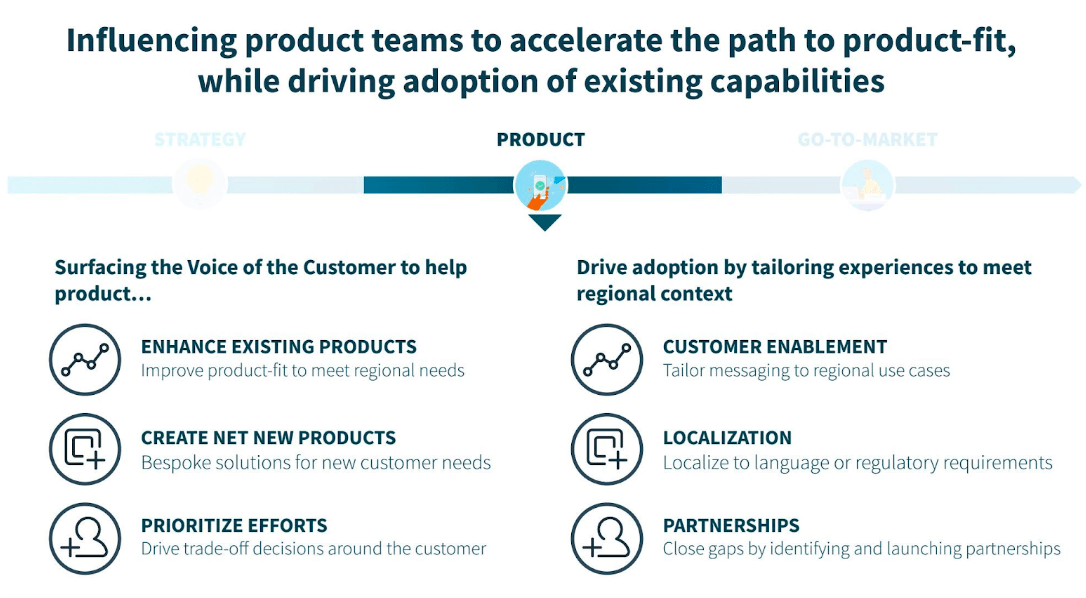
When we grew into Canada, that's essentially what we did. We understood where we could play and we knew that our Canadian customers could use our products for a very specific workflow.
Unfortunately, there were gaps in that workflow, so we surfaced customer feedback to the product team and had them prioritize enhancements and net-new products that we knew would move the needle.
Step three: Lead optimized go-to-market strategies
Finally, product marketing can play a vital role in driving a much more unified go-to-market strategy.
When you're going into a new market, the sales team there may be new and not have much confidence in speaking about your product. With this clarity on the new market and your tailor-made regional positioning, you can set your sales teams (and your entire go-to-market team) up for success.
Your job is to take the positioning you’ve built and translate it into the language of customer-facing teams. You can do that through customer value props, positioning playbooks, sales decks, and more.
Ultimately, you need your sales folks to buy into your positioning. When we developed our go-to-market playbook, we made it clear to our sales team that we did so not because we love developing positioning, but to help them achieve their sales targets.
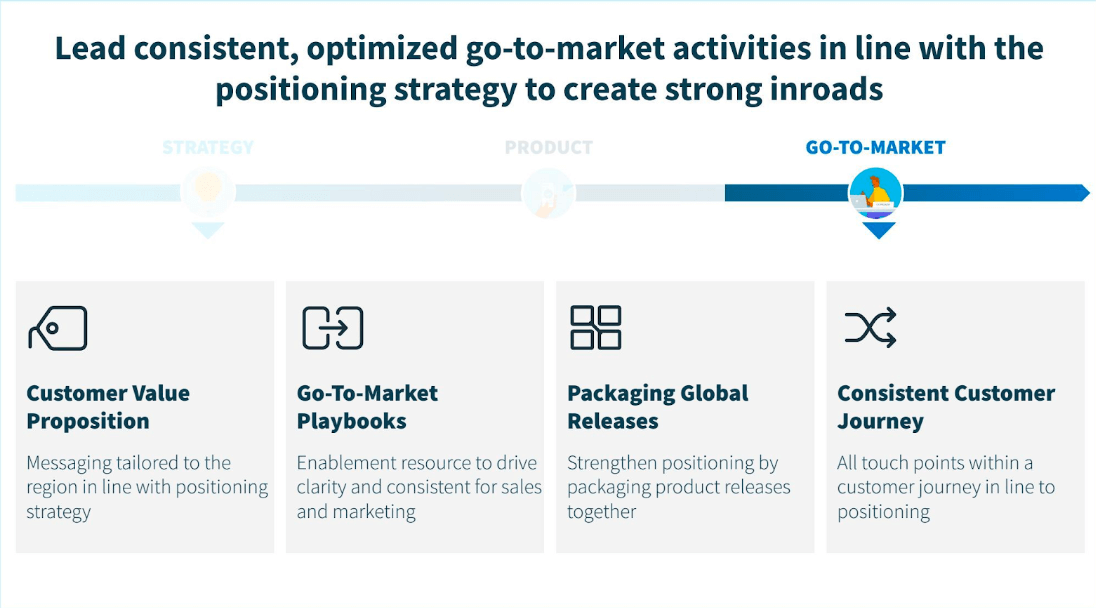
From there, you want to package your communications in a way that aligns with your positioning. To make this happen, you’ll need to take all the different propositions, updates, and releases that product teams are developing, and stitch those together so that every release and every customer touchpoint reinforces your positioning within that market.
All this is going to allow you to deliver a very consistent customer journey. Whether customers are engaging with your top-of-funnel marketing team, your sales teams, or your customer success teams, everything they hear about your products is going to align with the positioning you set up at the start of the value chain.
How this customer-first approach will enable you to succeed
This is what we've done to accelerate our growth in Canada. Thanks to this approach, we’ve not only seen greater consistency across customer touchpoints, but we’ve also seen improvements in customer-facing teams’ morale and confidence in speaking about our product.
As if that wasn’t enough, sales volume has increased, the velocity of closed sales has increased, and sales efficiency has increased. We’re spending less time trying to target every single customer. Instead, we’re honestly telling them whether or not we can meet their needs with our offering in their market as it stands today.
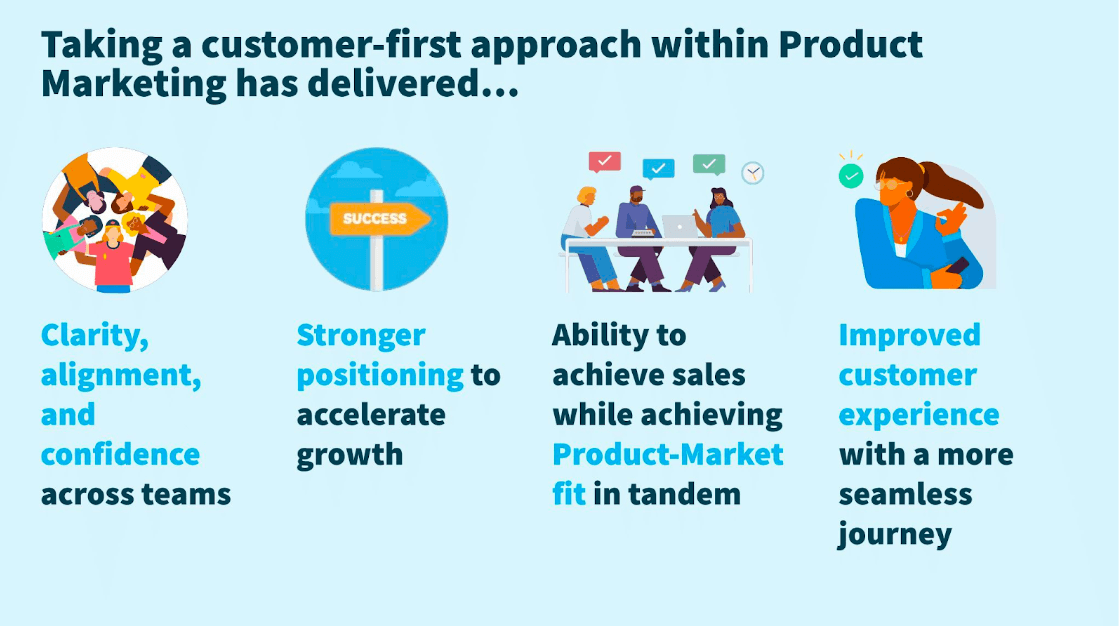
This approach is all about scaling into new markets more effectively and efficiently. It will give you greater clarity and consistency across teams, stronger positioning that accelerates your growth, a better customer experience, and the ability to hit short-term sales targets while you optimize your product-market fit.
Time to wrap up
If you take nothing else from this article, just take away these three key points:
- Product marketing is uniquely positioned to identify growth opportunities, not just from a product-led standpoint, but from a regional and customer-led standpoint as you expand into new markets.
- To secure a foothold in a new market, develop a strong positioning strategy that focuses on what you can do well for your target audience there. That’s going to give you a foundation to build from.
- Use that positioning to empower your sales teams to hit their goals, and to steer a path to product-market fit with your product teams.


















 Follow us on LinkedIn
Follow us on LinkedIn




.svg)
Start the conversation
Become a member of Product Marketing Alliance to start commenting.
Sign up now